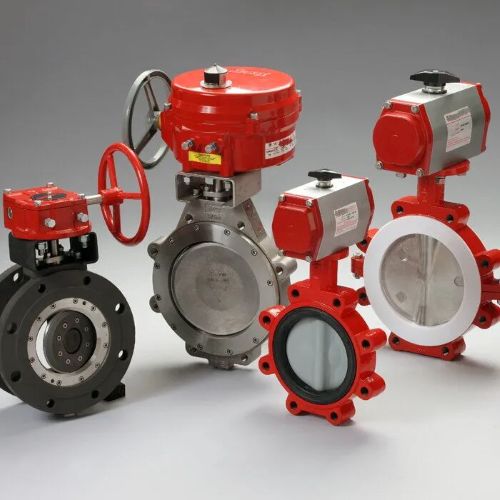


Maintenance and Troubleshooting of Butterfly Control Valves
Butterfly control valves are quarter-turn valves that regulate fluid flow using a rotating disc. When rotated, the disc opens or closes, controlling the flow through a pipeline. Known for their compact design, fast operation, and cost-effectiveness, these valves are widely used in HVAC systems, water treatment, chemical processing, and other industrial applications.
While butterfly valves are durable and efficient, regular maintenance is essential to ensure optimal performance and prevent system issues. This guide outlines the main types of butterfly valves, common problems, and essential maintenance tips.
Wafer-Type Butterfly Valves
Wafer valves are compact and fit between two pipe flanges. They are held in place by bolts and are commonly used in low-pressure applications like HVAC and water distribution.
Pros: Lightweight, economical, easy to install
Cons: Not suitable for high-pressure or isolation applications
Lug-Type Butterfly Valves
Lug valves have threaded inserts, allowing them to be bolted independently to each pipe flange. This enables one side of the pipeline to be disconnected without disturbing the other.
Pros: Suitable for medium-pressure systems, allows sectional isolation
Cons: More expensive and heavier than wafer types
Flanged-Type Butterfly Valves
Flanged valves have integral flanges that bolt directly to pipeline flanges, offering a strong and leak-resistant connection. These are ideal for high-pressure or high-temperature applications.
Pros: Durable, leak-free, handles tough conditions
Cons: Highest cost, larger size
1. Regular Inspection
Check for wear, corrosion, and leaks on the valve body, disc, stem, and seat. Also inspect the actuator for responsiveness and alignment.
2. Lubrication
While the valve itself typically doesn’t need lubrication, pneumatic actuators may require lubricated air. Use only recommended lubricants and avoid over-lubrication.
3. Cleaning
Remove debris and buildup from the disc and seat to maintain proper sealing. Use non-abrasive cleaners and flush the pipeline when needed.
4. Seal and Packing Adjustments
Tighten packing bolts gradually and replace worn gaskets or seals with compatible materials to prevent leaks.
5. Actuator Maintenance
Ensure the actuator is calibrated, aligned with the valve stem, and free of mechanical issues. Regular testing improves control accuracy.
Leakage: Caused by worn seats or seals. Replace components and check alignment.
Sticking Disc: Caused by debris or actuator faults. Clean the valve and inspect actuator performance.
Inconsistent Flow: Often due to actuator or control issues. Recalibrate or inspect the actuator and control system.
Noise or Vibration: May result from loose bolts or poor installation. Re-tighten components and ensure proper mounting.
Butterfly control valves offer a practical, efficient solution for fluid flow management across many industries. With proper maintenance—including regular inspections, cleaning, actuator checks, and seal adjustments—these valves can provide long-lasting, reliable service. Addressing issues early helps minimize downtime and ensures smooth, efficient system operation.Know more about Google SEO Directory
